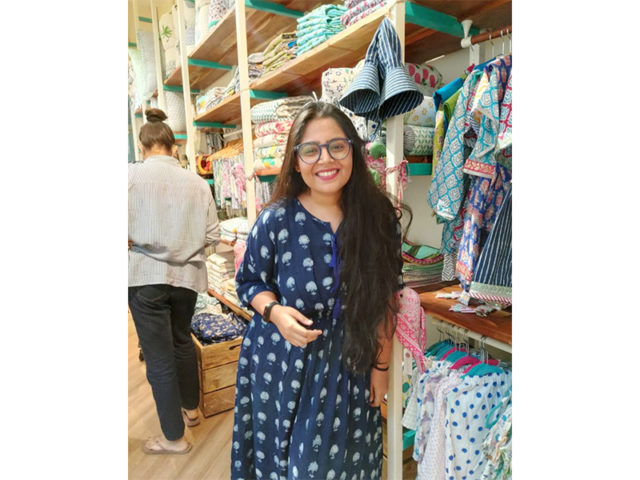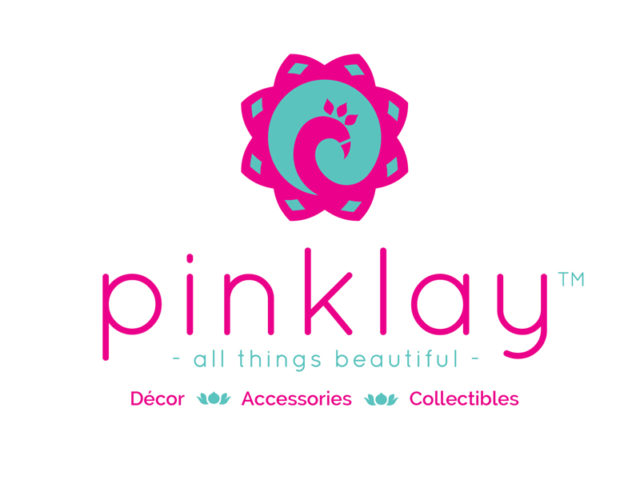Travel around the world and you’ll find that some of the most beautiful pieces trace their origin back to India. Whether it’s their beautiful prints, the pop of colour, or even the intricacies of handmade designs, Pinklay is a celebration of all these and more!
In conversation with TC46, CEO & Founder Daisy Tanwani talks about the essence of her lifestyle brand, the inspiration behind it, and also shares some sound advice for small businesses looking to scale in a sustainable and profitable manner.
1. What is your educational & professional background?

I hold a Bachelor’s degree in Mass Media with a specialisation in Journalism from Jai Hind College, Mumbai University. I’ve worked across industries for over 10+ years in multiple functions – my last role prior to starting my own brand Pinklay was with Danone as their Marketing Manager.
2. What prompted the idea for Pinklay?

The idea behind Pinklay was simple—create a more accessible, aspirational, made-in-India design brand that caters to the modern Indian. As an avid traveller, I often curated pieces from around the world and often found them to have originated in India. The finest craftsmanship was being exported out and sparsely available to Indians, if at all. Through Pinklay, I wanted to make good designs made by Indian artisans accessible to Indians.
Pinklay’s designs are strongly rooted in colour. It seeks to redefine how colour has come to often be perceived – kitsch and quirky – into products that are contemporary, tasteful, and authentic. Our design language doesn’t shy away from bold combinations. Colour has the power to reinvent spaces, convey meaning and ideas, transform moods and energies, and transcend boundaries.
When I first sat at the drawing board to pen down what I wished to create, these were the first few lines I wrote that continue to drive and inspire everything we do at Pinklay:
“Pinklay is a welcome pause, away from the humdrum. A visual delight, a fresh breath of life. It believes, it hopes. It’s joyful in appearance and sincere in character. It’s a keeper.”
3. Did you always know you wanted to work in this space?
Yes and no! It all happened very serendipitously – I was born and brought up in Jaipur – one of India’s richest handicraft clusters. I have grown up seeing handcrafts, and as a state, Rajasthan is known for its vibrant use of colours in all its art forms. My father was in the textile and handicraft business, so in many ways, this was something I was exposed to from a very early age. While my corporate career was very rewarding and fulfilling, I always felt the desire to start something of my own, allowing me to pursue my interests while also making an impact.
4. What was your first milestone & how did you get there?
Our very first milestone was getting ready to test our idea and design language at one of Mumbai’s biggest exhibitions, The Lil Flea. We wanted to test the market, understand customer behaviour and preferences, receptivity to our product offering, and market gaps and opportunities. We couldn’t think of a better way to do that than stand in front of our customers, and listen and learn the old-school way. While we always wanted to be an online-first company, learnings from our very first exhibition shaped how we approached our business and offerings.
Getting ready was no mean task – we were stretched for time, money, and resources – being a self-funded company, we had to be very resourceful and frugal from the get-go. While I don’t have a formal design degree, I personally designed our very first collection and ran point on everything – from product to marketing. I am deeply indebted to my family and friends circle – I couldn’t have pulled it off without them – they were my biggest advocate and supporters.
5. What are your tips for an aspiring entrepreneur who wants to enter this space?
India is a powerhouse of talent and the handicraft industry has tremendous potential that is just waiting to be tapped. We are already known for our handcrafts the world over – what remains is making it relevant to modern design sensibilities. I have particularly found going to the roots of any art form to be enthralling and enriching – it has helped me better understand not just the power and limitations of the art form but also how we can reimagine it to meet the needs of the modern Indian. Many of my ideas have come from sitting with the artisans and going over iterations of design and product, tapping into their years of experience and expertise, before arriving at something wonderful. We consider the artisans we work with as partners – not suppliers – and are equally invested in ensuring they profit and live a dignified livelihood. For only when we work together can we create meaning and purpose – and magic!
6. What were the 3 best business & financial decisions you made?
- Keep a hawk-eye on the inventory – We keep a very close eye on how much inventory we carry. As a business, we believe in working in small batches of everything and only going into production when necessary. This has ensured we are always lean as a business with only necessary capital being blocked in stocking and maintaining inventory.
- Check your unit economics – As your business grows, costs seep in from different corners and so it is important you keep a close tab on your unit economics. We have deliberately stayed away from deep discounting models and have tried to keep true to what we believe to be a fair price for the products we sell such that we remain profitable.
- Be frugal/resourceful – As a self-funded business, being resourceful almost came as a requirement. Money saved is money earned. Other than non-negotiables (such as product quality, customer experience, employee welfare, etc.), everything we do requires us to be smart about the resources we have at our disposal and how best we can maximise them.
7. How long did it take you to monetise your venture? What was the turning point?
We were making money from day 1 of our business. I started with an initial capital of 15 lakhs that was put together through my personal savings. It was important to me that the business support itself and the money roll in order to support and drive future growth.
8. Are you looking to raise funding?
We are a 100% self-funded business. While we are not actively looking for funding, we do evaluate every single proposal that comes our way. This is not limited to just monetary funds, but also synergistic partnerships that can propel the brand to reach its potential.
9. Who are the key employees & vendors you need to secure to work in this space?
When I started the business, I had to put on many hats. This is in stark contrast to corporate jobs I had done where we often are responsible for a single silo. That said, functions I invested in early on where around building a strong customer experience team, liaisoning with the artisan community we worked with, and building a strong design team.
10. How do you intend to scale up your business in the next 5 years?
We are looking to build an omnichannel experience for our customers. This involves building a strong online and offline platform for customers to experience and engage with Pinklay. We already have a strong online presence and are looking to expand our offline footprint in the coming years. We expect to have retail stores across major cities in India. In addition, we are also doubling down our efforts on building a strong international presence.
Think you’re a Self-Starter or know someone who is? Drop us an email to be featured on The Channel 46 at partnerships@anvilmedia.in.

